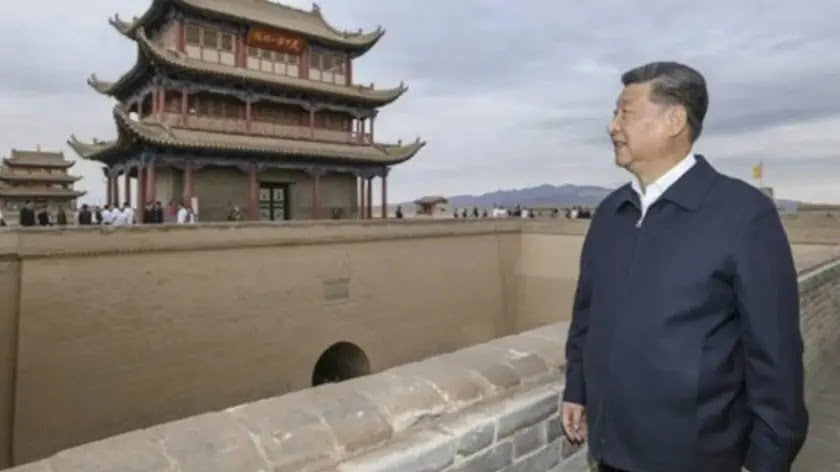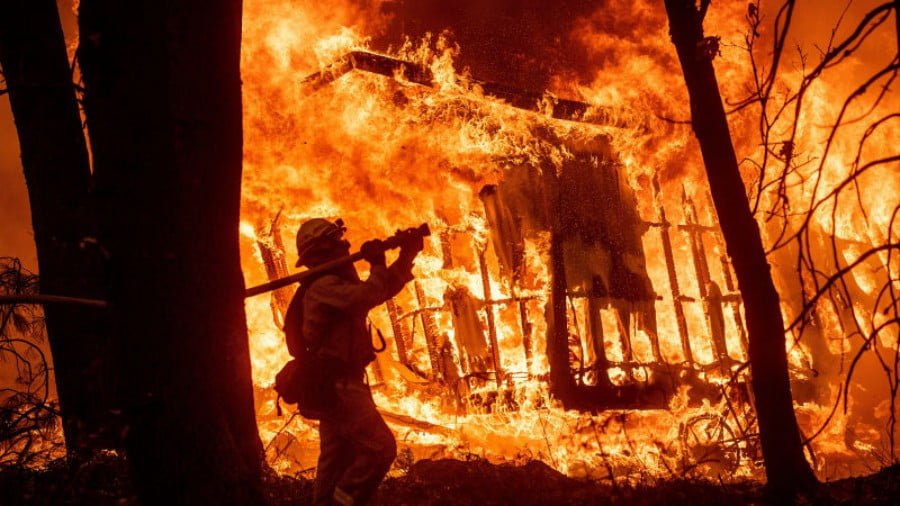Yemen’s Trifurcation Is Arguably a Fait Accompli
The formalization of Yemen’s de facto trifurcation into an Iranian-backed North Yemen and a federalized South Yemen that preserves Saudi Arabia and the UAE’s existing “spheres of influence” in the East and South respectively requires compromises from all stakeholders but would peacefully end the war.
The Present State Of Military-Political Affairs
The nominally united Republic of Yemen is already de facto trifurcated into Emirati, Iranian, and Saudi “spheres of influence”, but the Iranian-Saudi rapprochement and the growing Emirati-Saudi rift might soon formalize this status. The first-mentioned asserts influence across the South through the Southern Transitional Council (STC), the second exerts sway in the North via the Houthis, while the third relies on a combination of the Islah party and newly formed “Nation Shield Forces” (NSF) to command the East.
The Chinese-facilitated Iranian-Saudi rapprochement could inspire those former rivals to symbolically bury the hatchet by prioritizing a political solution to the nearly decade-long Yemeni War, but any outcome that doesn’t result in the restoration of South Yemen’s independence could lead to a new war. The Wall Street Journal recently reported on the growing Emirati-Saudi rift, which extends credence to concerns that Riyadh might try to cut Abu Dhabi and its allies out of any talks with Tehran over Yemen.
As the leading force fighting in support of Yemen’s UN-recognized government, Saudi Arabia might assume that it has the right to deal with the Houthis’ Iranian patron on a bilateral basis in this context and thus speak on behalf of the entire coalition, including the UAE and the STC. This could see those two agreeing to one of three scenarios, none of which is expected to be acceptable to the South Yemenis who aspire to restore their independence as a unitary state, the last-mentioned factor being crucial.
The Three Most Likely Scenarios
Regarding those aforementioned scenarios, these are: 1) the formation of a “national unity government” involving the Houthis; 2) the bifurcation of Yemen back into North and South but with the latter as a federal state divided into Emirati- and Saudi-aligned halves; and 3) formal trifurcation. Each of these three most likely possibilities would probably prompt the South Yemenis to protest, if not outright fight in support of their previously described goal of an independent unitary state, likely with UAE help.
There’s too much bad blood between the Houthis and the STC for the first scenario to stand any chance of success, while the second is already de facto trifurcation and thus contrary to the South Yemenis’ vision of restoring the unitary nature of their erstwhile state. According, the third scenario would also obviously be unacceptable to them as well. Each of these possibilities that could be advanced by secret Iranian-Saudi talks thus raise the risk of transforming the war instead of ending it.
The first scenario could see the Iranian-backed Houthis and Saudi-backed UN-recognized government joining forces to disarm the Emirati-supported STC if it refuses to go along with their “national unity government” plan, destroying them if they fight back, and then jointly occupying the South again. The second and third scenarios, meanwhile, could lead to a proxy war between Saudi Arabia and the UAE fought by the first’s Islah and NSF proxies against the second’s STC allies.
All three of these scenarios are therefore contrary to the cause of restoring South Yemen’s independence as a unitary state, with the second being the “lesser evil” since it could theoretically achieve sovereignty without bloodshed in the event that the STC surrenders the East to Saudi proxies. Even in that scenario, however, it can’t be ruled out that the largely secular locals won’t eventually rise up against the religiously strict Islah party and their equally unpopular NSF praetorian guards.
Practical Arguments Against UN-Backed Referenda-Driven Trifurcation
In principle, each of the already de facto existing “Three Yemens” could hold referenda on independence and federalization in order to peacefully avert any potentially violent disputes related to these sensitive issues, but this proposal contains a host of problems that impede its promulgation. For instance, it would first require all parties to agree to such a vote, which the Houthis, Yemen’s UN-recognized government, and/or the Saudis’ Eastern proxies might reject, thus torpedoing it.
Not only that, but even if referenda were only proposed in Yemen’s non-Houthi-controlled Eastern and Southern regions that are nominally under the UN-recognized government’s control despite being de facto split between the STC and the Saudis’ proxies, then one of those two might still not agree to it. Furthermore, in the unlikely event that they do, then they’d require UN observers to ensure fairness and likely also a preemptive peacekeeping deployment along the Line of Control (LOC) ahead of the vote.
The last-mentioned requirement for assisting a peaceful separation between Saudi-aligned East Yemen and Emirati-aligned South Yemen in the scenario that the first-mentioned freely votes for that (which is questionable due to the likelihood of Saudi bribery and intimidation) is rife with its own troubles. Neither South Yemenis nor their STC representatives acknowledge the existence of East Yemen, and neither do Saudi Arabia or the UAE, thus meaning that no LOC between them officially exists either.
South Yemenis, their STC representatives, and those two’s Emirati allies would therefore first have to acknowledge the existence of East Yemen, the legitimacy of its Saudi-backed federal and possibly even separatist causes, and then agree on the LOC between them in order for that vote to take place. Assuming that this happens for the sake of the present piece’s scenario forecasting exercise, then it can’t be taken for granted that the divided UNSC would agree to deploy observers and peacekeepers.
The New Cold War, which can be oversimplified as the worldwide struggle between the US-led West’s Golden Billion and the Sino-Russo Entente over the direction of the global systemic transition (with the Global South balancing between both but sympathizing with the latter), runs right through the UNSC. The first de facto bloc’s American, British, and French members would have to agree with the second’s Chinese and Russian ones on this sensitive geostrategic issue, which can’t be assured will happen.
Without a UNSC mandate, which might not be given for the abovementioned reasons related to the New Cold War divisions that run right through that body, then the analyzed referenda on formal bifurcation/trifurcation might not be regarded as legitimate. Even so, it could still take place, but would then likely require Saudi Arabia and the UAE to deploy forces on their respective side of the LOC ahead of time, with the second having to do so along the border with North Yemen to deter Houthi attacks too.
This scenario also can’t be taken for granted either owing to their growing rift that might lead to disagreements about the LOC between their respective “spheres of influence” in Yemen, which both remain reluctant to officially recognize as of now. If they and their allies can’t agree on this by themselves, then the LOC and related issues might require external mediation, which those two Gulf countries’ close Russian and/or Chinese partners could potentially assist with if requested.
Saudi Arabia’s Strategic Calculations In East Yemen
Returning to the topic of Yemen’s formal division, which is the most likely outcome of its conflict in one way or another instead of a faux and forced “reunification”, its bifurcation back into North Yemen and a unitary South Yemen is much more sustainable than any form of trifurcation. The Saudi-backed UN-recognized government would have to agree to give up control of the North, irrespective of whether the Iranian-backed Houthis want independence, and then Riyadh would have to withdraw from the East.
This sequence of events is unlikely, though the first step could possibly happen, especially if there’s a secret Iranian-Saudi deal for formally bifurcating Yemen as the most pragmatic geopolitical solution to their long-running proxy war there. Even if that happens, however, then it’s unrealistic to imagine that Saudi Arabia would unilaterally withdraw its forces from the “sphere of influence” that they and their Islah-NSF proxies carved out in the East in support of a unitary STC-led South Yemen after the war ends.
Rather, the Kingdom would be expected in that case to begin an information operation aimed at legitimizing its “sphere of influence” there, whether it’s achieved via South Yemen’s post-war federalization or the East’s secession (and possible “unification” with Saudi Arabia afterwards). To that end, it might seek to revive memories of now-nominally “united” Yemen’s previously formal trifurcation from 1962-1967.
At that time, it was divided between the independent Yemen Arab Republic (which was embroiled from that year until 1970 in a bloody civil war with monarchist forces), the Federation of South Arabia, and the Protectorate of South Arabia, the last two of which were officially under UK control. As it turns out, the last-mentioned’s borders roughly correspond to Saudi Arabia’s “sphere of influence” over modern-day Hadramout and Mahra governorates, hence Riyadh’s likely interest in soon reviving memories of it.
Its information operation could therefore seek to argue that the geopolitical precedent has already been set for East Yemen’s possibly future status as either an autonomous federal subject in a newly restored South Yemen or a separate state in and of itself, both of which would fall under Saudi influence. Either outcome runs the risk of sowing the seeds for another conflict even if they’re achieved peacefully in the short term since the locals don’t support the suzerainty that their northern neighbor is forcing on them.
Averting An Emirati-Saudi Proxy War In South Yemen
This means that a possibly violent civil uprising is practically inevitable after some time, one which could quickly lead to a proxy war between Saudi Arabia and the UAE. It could be fought via their Islah-NSF and STC partners respectively, whether as a South Yemeni civil war in the bifurcation scenario or an international one between a STC-led and Emirati-supported South Yemen that arms a pro-reunification national liberation movement in a Saudi-backed East Yemen in the trifurcation scenario.
If the STC and their UAE allies either aren’t powerful enough to force Saudi Arabia to withdraw from its “sphere of influence” in the East and order its proxies to support the restoration of a unitary South Yemen or don’t want to risk a war with them over this issue, then they should immediately begin talks. The Kingdom is unlikely to withdraw from the East and might even be cavorting with Iran in secret right now to join forces against South Yemen in the earlier discussed “national unity government” scenario.
The UAE might therefore soon be forced into the dilemma of either ceding its influence in Yemen by standing aside as Iran and Saudi Arabia jointly crush its STC allies who’ll likely revolt against that aforesaid scenario or fighting a proxy war against those two over this issue. With a view towards preemptively averting both disadvantageous sequences of events, the UAE might encourage the STC to join it in forthcoming talks with Saudi Arabia and its Eastern proxies on South Yemen’s federalization.
To be sure, this “lesser evil” from the perspective of the South Yemeni people might only delay the seemingly inevitable conflict that was earlier described between the Saudi-backed East and the Emirati-supported South, but it might be preferable for the UAE. That country probably isn’t prepared for fighting a proxy war in support of the STC against both the Iranian-backed Houthis and the Saudi-backed UN-recognized government, let alone in the very near future, ergo the need to settle for federalization.
In that event, a referendum on this issue wouldn’t be necessary since Saudi Arabia and the UAE can strongly encourage their allies in the East and South respectively to agree on this as part of the terms for restoring South Yemen’s independence. The Iranian-backed Houthis would be powerless to thwart Yemen’s bifurcation even if they were against it, but Riyadh might get its now-former rival to have them agree to this in order to symbolize those two’s rapprochement by ending their proxy war in this way.
Simply put, everyone would have to compromise on their maximalist goals in pursuit of peace if this is to happen. The Iranian-backed Houthis would have to give up their goal of conquering South Yemen, the Saudi-backed UN-recognized government would have to give up its goal of ever reasserting itself over North Yemen, and the STC would have to give up its goal of restoring the unitary nature of the erstwhile state that they want to revive. Only through these compromises can the war end in the near future.
The Influence Of Shared Emirati-Saudi Stakes In Preserving The GCC’s Unity
As was warned throughout this analysis, however, the seemingly inevitable war between then-federalized South Yemen’s Saudi-backed Eastern and Emirati-supported Southern regions would just be delayed in that scenario. That said, those two Gulf countries might agree that it’s better for both of them to push back their proxy war until a later time (perhaps in the hopes that it ultimately might not transpire) than to risk fighting it sometime soon and instantly dividing the GCC as a result.
After all, that bloc could plunge into crisis in the “national unity government” scenario upon the Saudi-backed UN-recognized government resorting to force against the Emirati-supported STC that’ll predictably rebel against the Houthis exploiting that structure to exert influence over the South. The UAE would either have to cede its influence in Yemen and thus submit to becoming Saudi Arabia’s “junior partner” or protect its influence and prestige by fighting a proxy war that would divide the GCC.
The Kingdom might not want to replicate a much more violent version of the bloc’s prior crisis with Qatar, nor would the Emirates want to take that country’s earlier place as the group’s “black sheep” if it fights against the Saudis by proxy and is sanctioned by them and its fellow GCC members in response. Both of their interests are therefore best served by pushing back their proxy war to a later time by agreeing to restore South Yemen’s independence, albeit as a federalized state.
Frankly speaking, Yemen is already informally trifurcated, and any attempts to return to its bifurcation are fraught with the risk of provoking another conflict. Whether it’s Iran and Saudi Arabia joining forces via their local partners to crush the STC or that Emirati-supported group fighting the Saudis’ proxies in the East upon their refusal to join the unitary government of a newly independent South Yemen, the present war appears destined to soon morph into a different form if this trifurcation isn’t formalized.
The ”lesser evil” that stakeholders might agree to is for the Iranian-backed Houthis to lord over whatever they’d call their revived form of North Yemen while Saudi Arabia and the UAE delay their seemingly inevitable proxy war between South Yemen’s Eastern and Southern regions via federalization. Pushing for the separation of the Saudi-occupied East might be a bridge too far for Riyadh in terms of its international image as well as relations with Abu Dhabi, hence why it might settle for federalization.
Neither Saudi Arabia nor the UAE want to fight a proxy war with one another right now that would divide the GCC at this sensitive moment in the global systemic transition, and Abu Dhabi certainly doesn’t want to become the group’s “black sheep” in that scenario like Qatar previously was. They’re both therefore expected to be open to the idea of preemptively averting an imminent and potentially violent split between them by agreeing to the compromise of restoring South Yemen in federal form.
Concluding Thoughts
The formalization of Yemen’s de facto trifurcation into an Iranian-backed North Yemen and a federalized South Yemen that preserves Saudi Arabia and the UAE’s existing “spheres of influence” in the East and South respectively requires compromises from all stakeholders but would peacefully end the war. It’s in all parties interests as was explained, especially Saudi Arabia and the UAE’s, but that doesn’t mean that it’ll unfold since it requires extremely strong political will from everyone in order to succeed.
It hasn’t even been formally tabled either, but that could soon change if the STC, the UAE, or the latter’s close Russian and/or Chinese partners propose it in the coming future as the most pragmatic solution to this long-running war that also stands the best chance of at least delaying an Emirati-Saudi proxy war. Hopefully someone will introduce this idea into the discourse in order to gauge the relevant parties’ reaction to it, which might be more positive than some expect due to the Iranian-Saudi rapprochement.
In any case, the purpose of the present piece is to inspire someone to play that role so as to ideally bring about a peaceful end to what’s literally nowadays the world’s worst humanitarian crisis according to the UN’s World Food Programme. Everyone has a moral responsibility to those who are presently suffering to do their utmost to bring an end to their plight as soon as possible, which hopefully this proposal can help happen by at least nudging the political dynamics of this conflict closer in that direction.







